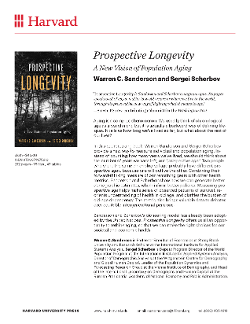23 October 2019 - 27 October 2019
Taipei, Taiwan
Health & wellbeing in the silver world: From bench to policy
The Asia-Oceania region hosts the fastest-growing aging population in the world, and Taiwan is no exception. Under the conference theme “Health & Wellbeing in the Silver World: From Bench to Policy”, the International Association of Gerontology and Geriatrics invites experts from the region and around the world to join the Asia/Oceania Regional Congress in Taiwan to promote the health and wellbeing of older adults in the Silver World.
Led by IAGG Headquarters and the Taiwan Association of Gerontology and Geriatrics (TAGG), all major societies dedicated to aging studies in Taiwan are organizing this event. Aging encompasses an overwhelming array of complicated issues demanding interdisciplinary collaborations. Five major areas will be explored:Clinical Science, Biological Science, Behavioral and Social Science, Policy, Planning & Practice, and Gerontechnology.
Sergei Scherbov will present new ways to redefine old age. He will also discuss a new book entitled "Prospective longevity: A new vision of population aging" that he wrote together with Warren Sanderson and that will be published in November with Harvard University Press.
For many years, Scherbov has conducted research in the field of aging and developed new measures of age and aging together with colleagues. He was principal investigator of the Reassessing Ageing from a Population Perspective (Re-Ageing) project at the World Population Program at IIASA that, among other things, ascertains the extent to which advanced societies are actually aging in multiple dimensions, including health, cognitive abilities, and longevity. He is also the IIASA partners in Ageing Trajectories of Health: Longitudinal Opportunities and Synergies (ATHLOS) project, that aims to achieve a better understanding of ageing by identifying patterns of healthy ageing pathways or trajectories and their determinants, the critical points in time when changes in trajectories are produced, and to propose timely clinical and public health interventions.
The 11th International Association of Gerontology and Geriatrics Asia/Oceania Regional Congress! will be held between 23 – 27 October 2019 at the Taipei International Convention Center in Taiwan.
For more information to this congress please visit the event website.
Abstract
Redefining old Age, Sergei Scherbov, 24 October, 11AM-12.30PM
In many regions of the world, life expectancy has increased significantly in recent decades and continues to increase. As people live longer, they also stay healthier for longer. But most studies of population aging focus on only one characteristic of people: their chronological age. The implicit assumption is that other characteristics relevant to population aging do not change over time and place. For example, the Old Age
Dependency Ratio (OADR) categorizes people as “old” at age 65, regardless of whether those people were living 50 years ago or likely to be living 50 years in the future. But clearly this is not true. 65-year-olds today generally have higher remaining life expediencies and are healthier than their counterparts in previous generations—which is reflected, in many countries, in rising ages of eligibility for public pensions. Many important characteristics of people vary with age, but age-specific characteristics also vary over time and differ from place to place. Focusing on only one aspect of the changes entailed in population aging but not on all the others provides a limited picture of the process, one that is often not appropriate for either scientific study or policy analysis.
The presentation will be devoted to the new ways of measuring aging that more accurately represent the real world. It will be shown that once more adequate measures of aging are used past aging looks very different and in countries with high life expectancy almost no aging was observed. Future aging trends look also much less gloomy when new indicators of aging are used compared to a traditional approach.
Recently developed characteristic approach for a study of population aging will be also introduced and used in evaluating differences in aging across space and time. The main idea of the approach is the conversion of different characteristics that reflect people’s physical, cognitive or health conditions to a single metric. The hallmark of the approach is the consistent use of changing characteristic schedules together with changing age structures, regardless of the exact way in which the two are combined.
Literature
- Sanderson WC, & Scherbov S. (2014) Measuring the speed of aging across population subgroups. PLoS ONE, 9(5), e96289.
- Sanderson WC, & Scherbov S. (2013). The characteristics approach to the measurement of population aging, Population and Development Review, 39(4), 673–685.
- Sanderson WC, & Scherbov S. (2010). Remeasuring aging. Science, 329(5997), 1287–1288.
- Sanderson, WC, & Scherbov S. (2005). Average remaining lifetimes can increase as human populations age. Nature, 435(7043), 811–813.

IIASA project
Ageing Trajectories of Health: Longitudinal Opportunities and Synergies (ATHLOS)
PUBLICATIONS
Demographic Data Sheets



